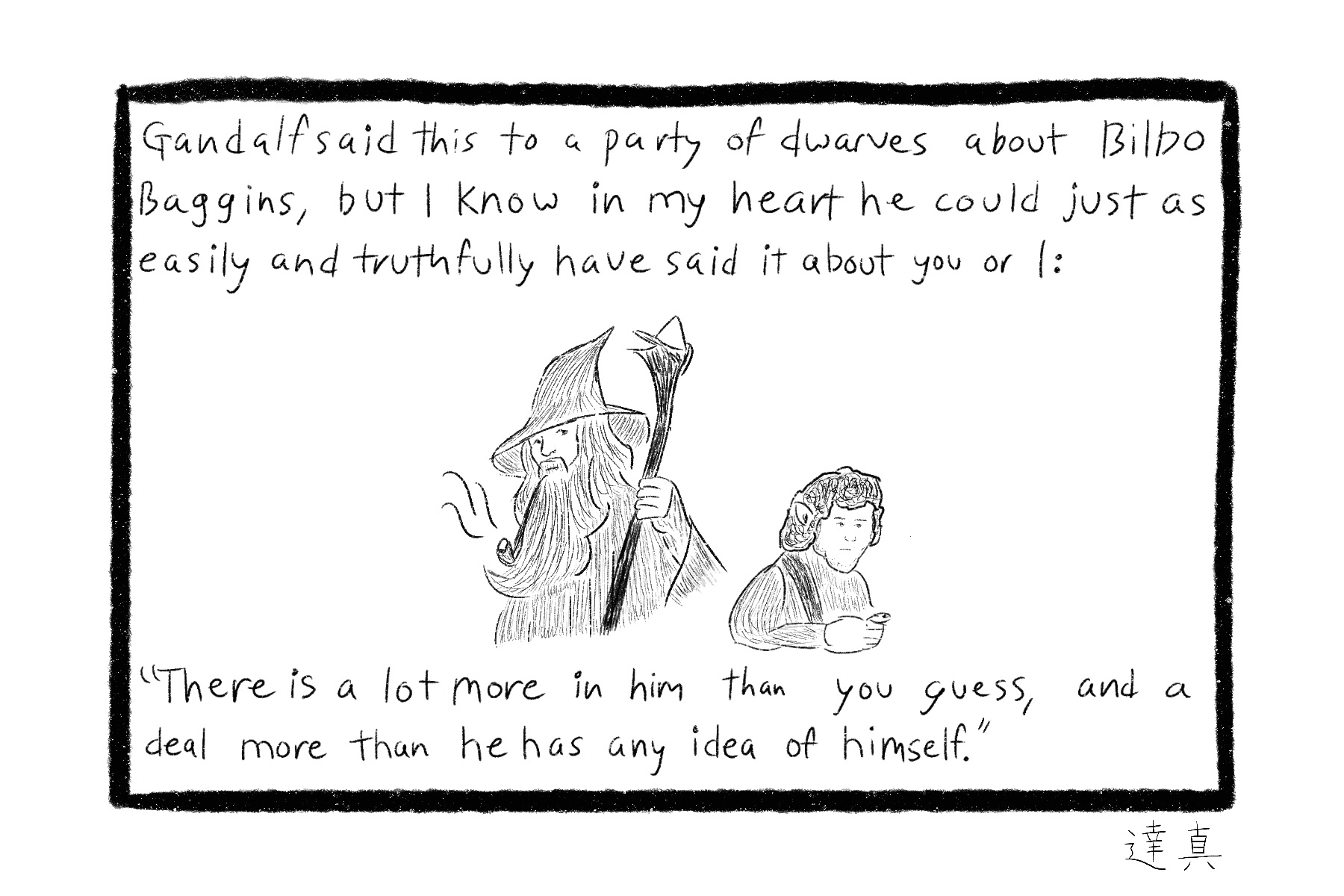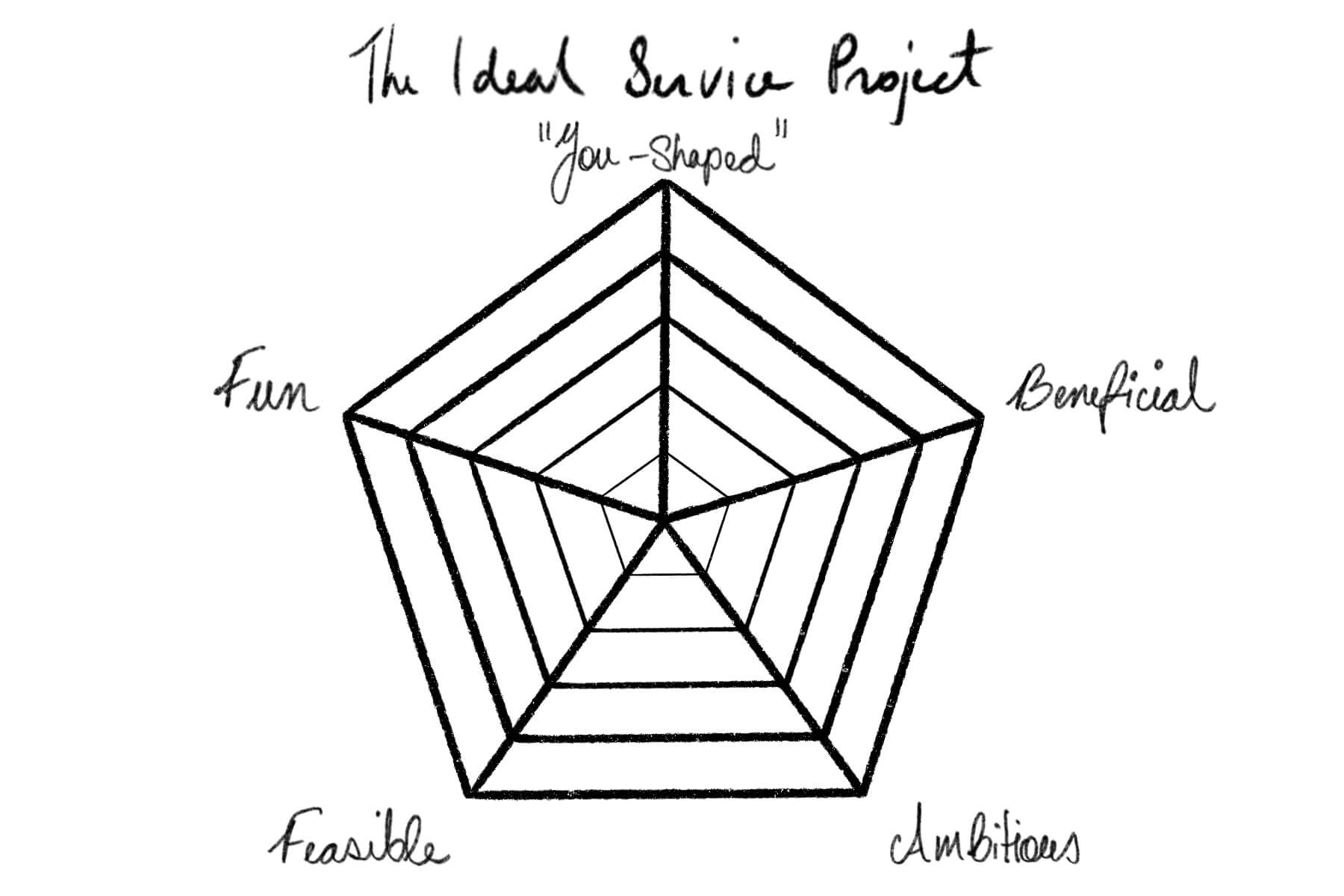co-authored with Mary Bajorek for our book, The Path of Empowerment
When I was a child, I loved Tolkien’s The Hobbit: Or, There and Back Again. I read it in the fourth grade, and it is, for me, the perfect example of reading the perfect book at the perfect time. I enjoyed the chapter books that my school assigned, but this book was far better than anything I’d ever read before.
I loved the hobbit Bilbo Baggins; the wizard Gandalf; their friends the dwarves and the elves and the eagles; their foes the trolls and goblins and the cave-dwelling Gollum and even the treasure-guarding dragon Smaug.
The book was just a little bit past my reading level—it pushed me to grow as a reader. I saw that I could accomplish more than my parents or teachers expected of me—no one was forcing or encouraging me to read it—and I saw that I was capable of even more than I expected of myself.
In this way, it was not unlike the arc of Bilbo himself. At the beginning of the book, Bilbo is a homebody, like his fellow hobbits—a man of comfort and leisure, who enjoys his pantries with ample foodstuffs and his tobacco smoke and his naps and the occasional festivity with his friends.
Hobbits are “plain quiet folk,” with “no use for adventures”—which are “nasty disturbing uncomfortable things! Make you late for dinner!”
Gandalf’s invitation to adventure is an unwelcome disturbance, and Bilbo’s instinct is to say, firmly and squarely, “Sorry! I don’t want any adventures, thank you. Not today. Good morning! But please come to tea—any time you like! Why not tomorrow? Good bye!”
Eventually, Gandalf incites or encourages or nudges him, and Bilbo joins the adventuring party of dwarves as their burglar. Perhaps you could even say that Gandalf coerces him—but a long-dormant, slumbering part of Bilbo wants to go on the journey, and Gandalf’s appearance in his home is merely an occasion for that shadow to emerge from its depths and to shine in its brilliance, unconventional for a hobbit but perfectly ordinary and standard in the annals of all the heroes of the world.
As an adult, I have always resonated with Bilbo as a character. I enjoy my comfort and my safety and my human pleasures. But there is also a part of me that is summoned by the circumstances into my life into courage and bravery and adventure, into grander, unimagined things.
All of us have these two aspects of us—the parts that crave stability and predictability and familiarity, and the parts that crave adventure and growth and grandeur. The wrestle and tug between these two pulls, and the circumstances we find ourselves in, is the very stuff of our lives.
We are aided by the arrival of friends, noble friends, spiritual friends, who see past the circumstances of the moment, the fears of our gut and the worries of our heart, into a deeper level, the level of our soul. We sometimes need a wizard or a sorceress to invite us on a quest, to see what we might not see for ourselves, to dare us to do something some quiet aspect of our souls knows we could, we can, we will.
The road may not be easy. It may not be comfortable. Like Bilbo, we may long for home: “‘I wish I was at home in my nice hole by the fire, with the kettle just beginning to sing!’ It was not the last time that he wished that!”
But we are braver, wiser, stronger than we may know ourselves to be. We may, in time, surprise ourselves with what we are capable of, with the journeys we go on, the treasures we find, the joy we partake in, the benefit we have.

Just like Gandalf invited Bilbo on an adventure, it’s our job to invite you on such a quest. A quest. Something that you can do, that your soul is calling you to—something that you will enjoy deeply, that will help you to grow, and that will be of tremendous benefit for the world. In practical terms, we call this The Ideal Service Project.
Let’s talk about what each of these components mean—service, project, and ideal.
Our quest, above all, aims to be of service. We wish to find something that will be of benefit to ourselves, our friends, our community, and the world, in the deepest way and at the largest scale we can manage.
A project is how we intend to be of service, our means and method whereby we expect to benefit the world. David Allen defines a project in Getting Things Done as “any desired result that can be accomplished within a year that requires more than one action step. Tiago Forte defines a project as “a series of tasks linked to a goal, with a deadline.”
There is a specific set of criteria we are looking for with each service project. For us, the ideal service project is:
- fun: enjoyable, meaningful, rewarding for you to work on—you feel a “hell yeah!” in your body when you imagine doing it
- “you-shaped”: a good fit for you based on your prior experience, skills, and goals
- feasible: demonstrably possible for you to do—you feel confident you can complete it based on your prior experience
- ambitious: will cause you to learn new things and grow your skills—you might feel nervous or even a little scared of doing it
- beneficial: benefits others and the world

It may seem like these variables are opposed. How could I feel confident that I can do this project, if it’s also pushing me in scary or uncomfortable ways? How can something be fun for me to do and be beneficial for others?
In practice, it is possible to find projects that are fun and beneficial, that challenge you while being feasible. The ideal service project hits this sweet spot.
As with many things in life, picking which project to work on is a matter of choosing between tradeoffs. One project might lean more towards being fun and ambitious, while another might be more feasible and beneficial.
A project is “you-shaped” if it fits you. Writing a blog post about an idea I’m interested in might be a good fit for me (Tasshin), but if you hate writing, it might not be a good fit for you. Similarly, you might enjoy a project like hand-building an outdoor bird-watching patio, whereas I would personally find that to be overly challenging and not very rewarding.
Ideally, a service project fits you like a hand fits a glove. It might be new or unusual, but when your friends think of the project, there should be a sense of “Hm, oh yeah! It makes sense that they’d do that!”
No one ever told Tasshin, “Hey, it’d be cool if you made some mettā music videos, or ran some mettā dance parties,” but when people who know Tasshin see those videos or attend those parties, there’s a sense—yep! that’s a thing Tasshin would do!
In practice, finding a project like this is often surprising. It’s as if the project idea were written on a Post-It note on your forehead, but you couldn’t see it without looking in a mirror.
Mary and I love to find projects like this with the people that we work with—something that you might not otherwise have thought of yourself, which is unexpected for you, but makes complete sense when you hear about it.
A project is feasible if there’s a clear sense, “yep, I can do that.” I feel very comfortable with projects that involve writing, speaking, or websites, for example. Similarly, if a project involves running an event or working with a client, there’s a sense, yep, Mary can do that.
Maybe for you, this involves wood-working or making visual art or producing crisp-sounding audio. The realm of what feels possible is informed by whatever skills you’ve built in the past and whatever projects you’ve already completed.
An ambitious project is the polar complement to a feasible project. An ambitious project is challenging, such that you’re stretching yourself to do something you haven’t done before. Maybe you’ll need to develop new skills, or simply use old skills at a bigger scale than you’ve ever done before.
If we’re assigning you an ambitious project, it might feel a little bit like we’re daring you to do something—lovingly and supportively, but it’s a dare all the same. Ideally, you feel excited by the prospect of doing something new and challenging, but it might also feel a little scary or intimidating.
Either way, that excitement or fear points to a sense of novelty and challenge, and to the possibility of growth. We bravely, courageously acknowledge the fear, and choose to do the service project anyway.
We want to co-create a service project with you to help you move forward with giving your gifts to the world. This will be a fun, challenging project—something that is aligned with your skills and goals, that you are capable of doing at your current skill level, that will help you to grow, and will be of benefit to the world.
Possible projects include: writing a manifesto, recording a video, writing a blog post, starting a podcast, recording a song, creating a piece of art, hosting an event. Your project will be tailored to you, though, so it’s hard to anticipate precisely what it will be in advance! We’ll work together to pick something that you feel excited about, and then you’ll have time to work on it with our support and feedback.
Ideally, completing a service project like this leads to more service projects in the future. You realize that you could take it one step further, or do something totally different, but which has the same qualities. You realize you could give yourself your own service project assignments.
Above all, conceiving of, executing, and sharing a service project—giving your gift—acts as a catalyst, something that accelerates you in your life path. It’s an actionable way for you to move towards finding and living your vow. It’s how you answer the call of adventure, and become the hobbit and the hero you always knew you could be.
If you enjoyed this post, consider subscribing to my newsletter, my YouTube channel, or following me on Twitter to get updates on my new blog posts and current projects. You can also support my work and writing on Patreon.
